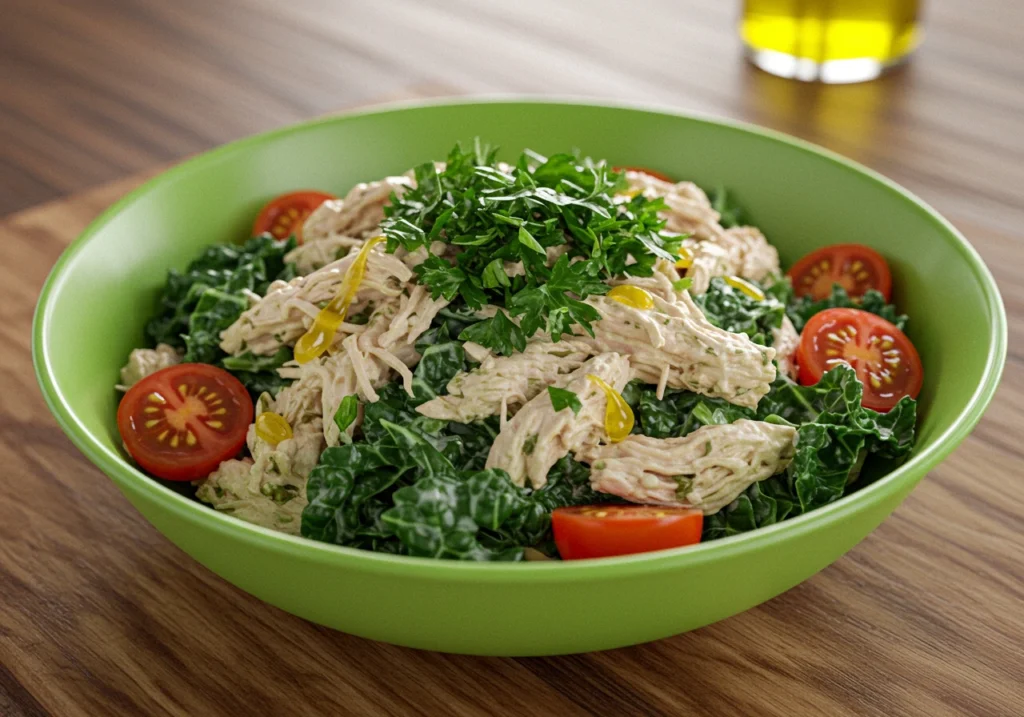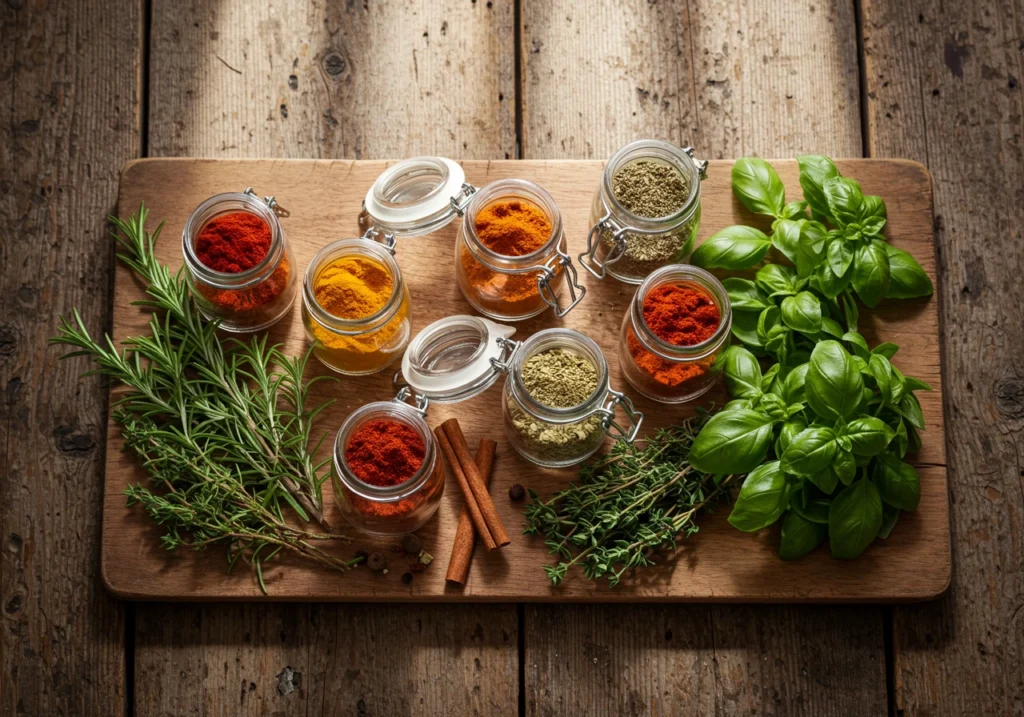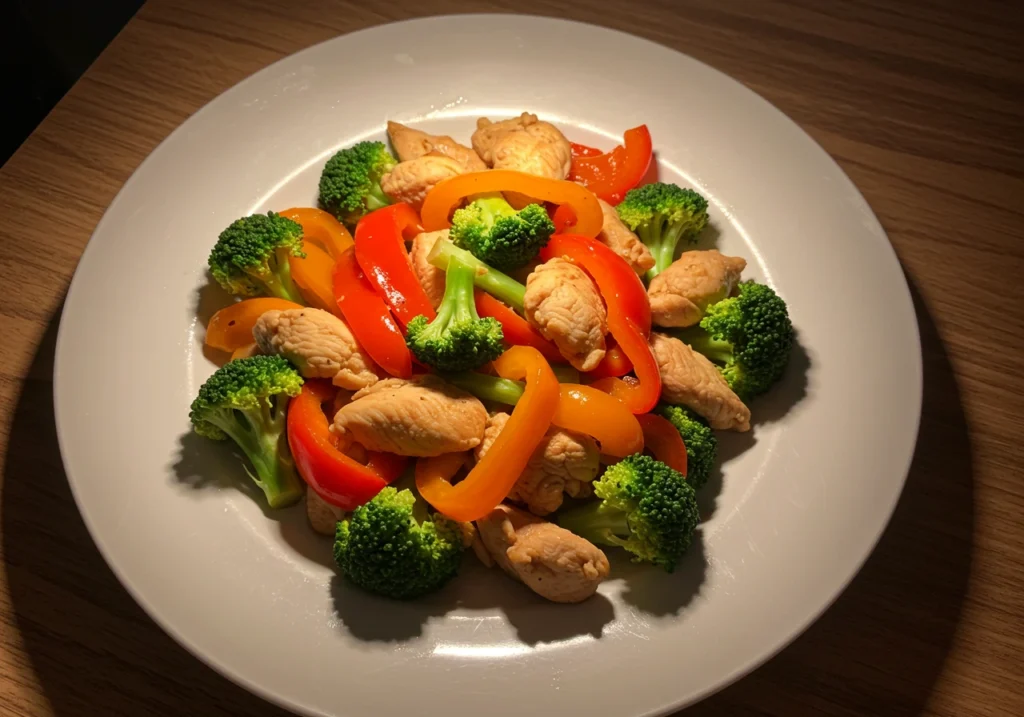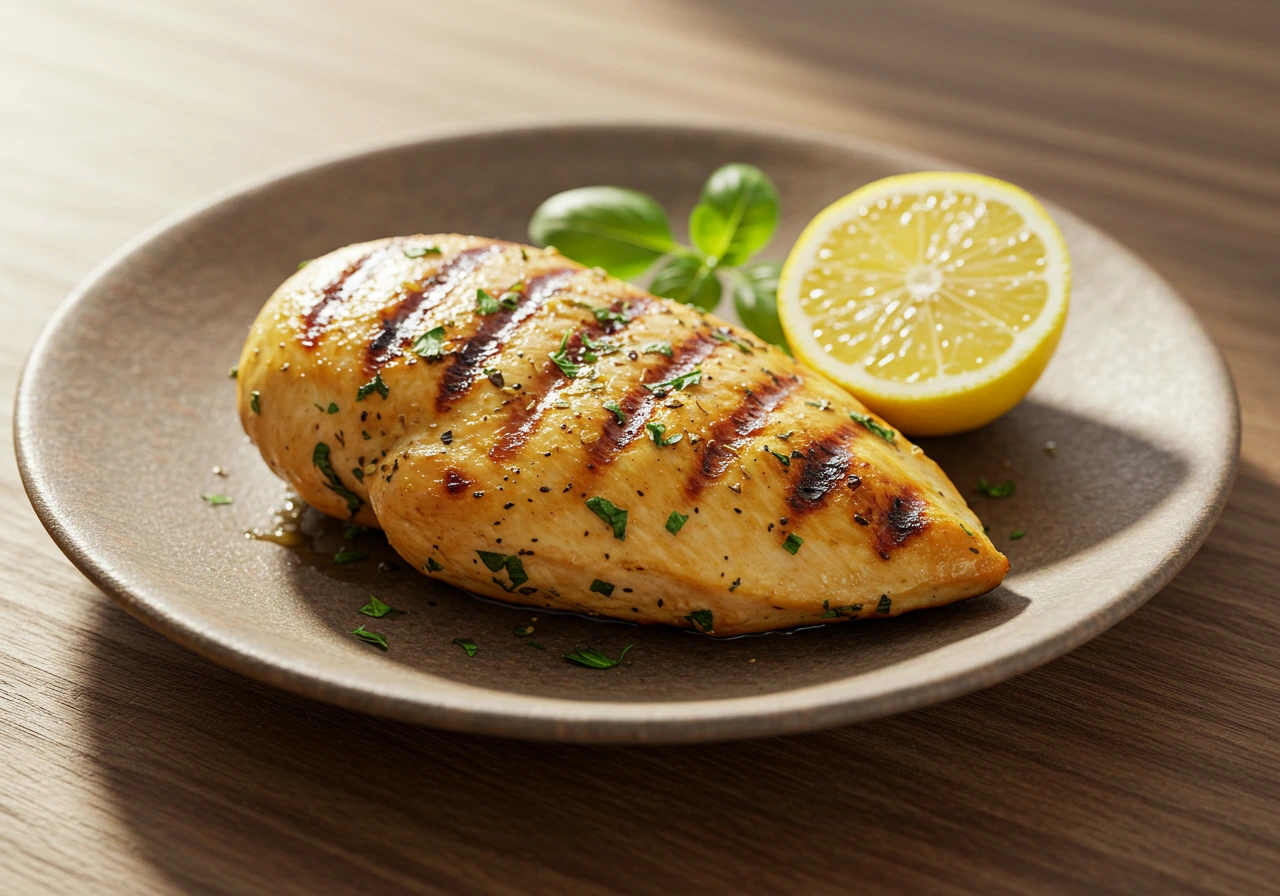Introduction
Let’s be honest—eating healthy shouldn’t mean sacrificing flavor. And yet, when you hear the phrase low sodium chicken recipe, you might imagine bland, boring chicken. But hang tight! That’s about to change.
This ultimate guide is crafted not only to introduce you to mouthwatering low salt chicken meals, but also to dive deep into why reducing sodium matters, how you can preserve (or even enhance) flavor, and which ingredients will become your new best friends in the kitchen. From learning which herbs unlock hidden flavors to trying delicious, juicy chicken dishes I personally cooked and loved—this article is jam-packed with value.
Whether you’re watching your salt for health reasons, cooking for someone with dietary restrictions, or simply craving something new and nourishing, this series has you covered.
Now, let’s kick things off with the first part: why understanding sodium is the key to creating a truly satisfying low sodium chicken dish.
Part 1: Introduction to Low Sodium Chicken Recipes
Why Low Sodium Chicken Recipes Matter
In a world where quick meals often mean processed food packed with salt, it’s refreshing to return to the basics—real ingredients and mindful cooking. Chicken, being naturally lean and versatile, makes the perfect canvas for crafting heart-friendly meals.
But let’s address the elephant in the kitchen: salt is everywhere. From canned broths to pre-seasoned poultry, it sneaks into even the “healthiest” looking meals. That’s why being intentional about your chicken recipe can do wonders—not just for your taste buds but for your overall wellness.
The beauty of these low sodium chicken meals is that they prove something powerful: flavor doesn’t need to come from a salt shaker. With a little creativity, you can build layers of taste that rival any traditional dish.
The Art of Balancing Flavor Without Salt
If you’ve ever tried a low sodium dish that tasted like cardboard—don’t worry, you’re not alone. I’ve been there too. But here’s the trick: when you reduce salt, you’ve got to amplify other elements. We’re talking about citrus zest, garlic, vinegars, pepper blends, and fragrant herbs like rosemary and thyme.
Even better? Some of these components not only enhance taste but come with health perks of their own. Think antioxidant-rich turmeric or inflammation-fighting ginger. You’ll discover that the “limits” of low sodium cooking actually unlock new culinary possibilities.
What to Expect from This Guide
This isn’t your average “just add Mrs. Dash and call it a day” kind of article. We’ll dig deep into:
- How sodium affects your health
- Clever ingredient swaps and flavor boosters
- Tried-and-tested chicken recipes with less than 140mg sodium per serving
- Cooking techniques that add richness—without a grain of salt
- Real feedback from my own kitchen experiments
You’ll leave not only with recipes but with confidence. Cooking low sodium chicken isn’t just possible—it’s deeply satisfying.
So if you’re ready to ditch blandness and embrace vibrant, nourishing meals, then let’s roll up our sleeves and dive into the science (and joy) of flavor.
👉 In the next part, we’ll uncover the role sodium plays in your body—and why cutting back is one of the kindest things you can do for your heart.
Part 2: Understanding Sodium and Its Impact
What is Sodium and Its Role in the Body?
Let’s break it down—sodium isn’t all bad. In fact, it plays a pretty important role in keeping our bodies balanced and functioning. Sodium is an essential electrolyte that helps regulate fluid levels, assists in nerve transmission, and supports muscle contractions. Yep, it’s literally part of the system that helps your heart beat!
Naturally found in small amounts in whole foods like celery and beets, sodium becomes problematic when it shows up in excess—which is way too often. Most of the sodium we consume doesn’t come from the salt shaker; it’s hidden in sauces, snacks, and pre-cooked meats.
While it’s necessary in moderation, too much sodium can throw your body off-kilter. That’s why understanding where it comes from—and how to control it—is the first step to reclaiming your health, starting right in your kitchen.
Pro tip: Cooking at home gives you 100% control over your sodium intake.
Health Risks Associated with High Sodium Intake
Okay, so what happens when sodium goes from friend to foe?
Well, the biggest red flag is high blood pressure—also known as hypertension. When your body holds onto extra water due to too much sodium, it increases blood volume, which in turn makes your heart work overtime. Over the years, that pressure can damage arteries, strain your heart, and lead to serious conditions like stroke, heart failure, and coronary artery disease. According to research shared by EatingWell, these effects are not just hypotheticals—they’re seen in millions of adults globally.
But wait, there’s more (unfortunately).
High sodium diets are also tied to kidney problems. The kidneys are responsible for filtering blood and managing water balance, and too much sodium can overload them. Over time, this stress may lead to chronic kidney disease. And as if that weren’t enough, studies from Allrecipes and Salt Sanity suggest that excessive salt intake might even weaken bones, as calcium is pulled from bones to help flush out excess sodium.
So, what’s the safe zone?
The American Heart Association recommends no more than 2,300 mg of sodium per day, which is about one teaspoon of salt. However, for optimal heart health, the ideal limit is closer to 1,500 mg per day—especially if you have hypertension, diabetes, or are over 50.
But here’s the kicker: the average American eats over 3,400 mg daily. Yikes!
That’s why learning to whip up a low sodium chicken recipe isn’t just a tasty experiment—it’s a step toward preventing long-term damage to your body.
Quick reminder: It’s not about cutting out salt completely—it’s about cutting back smartly.
Part 3: Benefits of Low Sodium Diet
Advantages of Reducing Sodium Consumption
Let’s face it—cutting back on sodium can seem like a culinary buzzkill. But, truth be told, it opens doors to long-term health perks that are downright life-changing. When you begin reducing your sodium intake, you’re not just tweaking recipes—you’re upgrading your life.
First off, the most celebrated benefit? Improved heart health. According to Tasty, Healthy Heart Recipes, a lower sodium diet helps stabilize blood pressure, eases the workload on your heart, and reduces the risk of heart-related complications. Your arteries stay more elastic, your blood pressure remains in check, and your heart beats a little happier each day.

Next up: your kidneys. These hardworking organs filter out waste and regulate fluid levels—but overload them with sodium, and they struggle. A low sodium lifestyle helps preserve kidney function and lowers your chances of developing chronic kidney disease, especially for those with diabetes or hypertension.
And let’s not forget stroke prevention. High sodium is a silent partner in raising stroke risk by elevating blood pressure and damaging blood vessels. Cutting back can lower that risk dramatically, giving you better odds of aging gracefully.
So, think of a low sodium chicken recipe as more than dinner—it’s a defense mechanism. One that’s as savory as it is smart.
By changing what’s on your plate, you’re changing your health trajectory.
How Low Sodium Diet Enhances Flavor
Here’s a little secret: less salt doesn’t mean less flavor. In fact, once you retrain your taste buds, you’ll discover an entire world of complex, vibrant flavors that salt once masked.
According to Easy Low Sodium Recipes and cukebook.org, the magic happens when you embrace natural flavor builders. Think about it: zesty lemon, smoky paprika, earthy cumin, and fresh basil can elevate a dish far beyond what salt ever could. Herbs and spices, when used creatively, add layers of aroma and dimension that table salt simply can’t touch.
Also, cutting back on sodium allows you to actually taste your food. Ingredients like sweet bell peppers, garlic, onions, or even a hint of balsamic vinegar begin to shine in ways you may have never noticed before. It’s like giving your palate a refresh.
Even Better Homes & Gardens agrees—once you step away from overly salted meals, your flavor horizons expand exponentially.
So go ahead—ditch the salt and discover what chicken really tastes like. Spoiler alert: it’s delicious.
Part 4: Essentials of Low Sodium Cooking
Key Ingredients for Low Sodium Chicken Recipes
If you want to master the art of cooking without relying on sodium, then your pantry needs a glow-up. Luckily, the secret isn’t hidden in some exotic market—it’s already in your fridge, garden, or spice rack.
Start with the real MVPs: fresh herbs and spices. From garlic, rosemary, and thyme to smoked paprika and turmeric—these aromatic wonders transform bland chicken into a flavor bomb. No exaggeration. Allrecipes recommends blending dried and fresh herbs for extra punch, especially when seasoning before roasting or grilling.
Next up? Citrus juices and vinegars. Lemon and lime juice can brighten any dish, while apple cider vinegar or balsamic can add depth without overpowering your ingredients. They’re the zingers that bring chicken to life—especially in marinades or pan sauces.
Of course, we can’t forget low sodium broths and sauces. Homemade versions are gold. But if you’re going store-bought, EatingWell and Better Homes & Gardens both suggest checking for broths labeled under 140mg of sodium per serving. Bonus: mushroom or veggie broths bring umami flavor without the salt.
Think of these swaps not as restrictions but as your new culinary toolkit.
Cooking Techniques to Enhance Flavor Without Salt
Let’s bust a myth right now—low sodium doesn’t mean low flavor. In fact, with the right cooking techniques, you can bring out even more depth in your dishes.
One of the best tricks? Marinating and brining with low sodium solutions. Swap out saltwater brines for a mix of lemon juice, garlic, and olive oil—or even a Greek yogurt-based marinade for extra tenderness. According to seasoned home cooks on Reddit and tutorials from Easy Low Sodium Recipes, marinating overnight is a total game changer. It tenderizes and infuses the chicken with bold, bright flavors.
Then there’s the magic of heat: grilling, roasting, and baking. These methods naturally develop caramelized, rich layers of flavor. Grilling adds smokiness, roasting brings a golden crisp, and baking—especially in a cast iron skillet—locks in juices while letting spices shine.
Low So Recipes points out that cooking at higher temps can create a “Maillard reaction”—aka, the beautiful browning that adds complexity to your dish, no salt needed.
Bottom line: flavor is in the process, not just the product. Cook smarter, not saltier.
Part 5: Recipe Selection
Criteria for Selecting Low Sodium Chicken Recipes
When it comes to crafting or choosing a low sodium chicken recipe, not every dish makes the cut. It’s not just about ditching salt—it’s about creating meals that are wholesome, flavorful, and practical. So, what exactly should you look for?
First, let’s talk nutritional balance. An ideal low sodium recipe includes a lean protein source (hello, chicken!), healthy fats like olive oil or avocado, and a good dose of fiber-packed veggies. According to SELF and Allrecipes, this combo helps keep blood pressure in check while fueling your body with lasting energy.
Second, it should be easy to prepare. Look, not everyone has time to marinate meat for 12 hours or prep 10 different components. Low So Recipes focuses on straightforward, minimal-step cooking that delivers maximum flavor.
Third, the ingredients should be easy to find. Recipes calling for obscure items you can only get from gourmet shops? Nope. Everyday ingredients like chicken breast, garlic, bell peppers, lemons, and herbs should be enough to create magic.
The goal is to make healthy eating convenient, not complicated.
Overview of Selected Recipes
Now that we’ve established what makes a recipe worth your time (and taste buds), here’s a quick preview of the low sodium chicken recipes we’ll be diving into next.
- Lemon Garlic Chicken – A tangy, herby masterpiece that uses fresh lemon juice, garlic, and rosemary for bold flavor without added salt. Super juicy, super simple.
- Herb-Crusted Baked Chicken – This one’s all about texture. Think crispy herb coating, no breading, and a flavor profile that includes thyme, paprika, and a hint of Dijon.
- Spicy Grilled Chicken Thighs – A fiery option for heat lovers! Features cayenne, smoked paprika, and a splash of lime. Grilled to smoky perfection.
- Chicken and Vegetable Stir-Fry – A weeknight hero! Colorful veggies meet lean protein in a sauce made with low sodium soy alternative and sesame oil.
Each recipe checks all the boxes: low sodium, full of flavor, quick to prep, and perfect for weekly meal rotation.
Stick around—you’re about to find your next go-to dinner!

Part 6: Featured Low Sodium Chicken Recipes
Low Sodium Lemon Garlic Chicken
Ingredients List
This bright, zesty recipe is a crowd-pleaser and proof that low sodium doesn’t mean low flavor. You’ll need:
- 2 boneless, skinless chicken breasts
- 3 tablespoons fresh lemon juice
- 1 tablespoon lemon zest
- 4 cloves minced garlic
- 2 teaspoons olive oil
- 1 teaspoon dried oregano
- ½ teaspoon ground black pepper
- 1 tablespoon chopped fresh parsley (optional garnish)
According to EatingWell, these ingredients deliver flavor that wakes up your taste buds—without needing to reach for salt.
Step-by-Step Preparation Instructions
- In a bowl, mix lemon juice, zest, garlic, olive oil, oregano, and pepper.
- Pound the chicken breasts slightly for even cooking, then place them in a resealable bag.
- Pour the marinade over the chicken, seal the bag, and refrigerate for 30–60 minutes.
- Preheat your oven to 400°F (200°C).
- Place the marinated chicken in a baking dish. Bake uncovered for 25–30 minutes or until the internal temp reaches 165°F.
- Optional: Broil for 2 minutes for extra browning.
Both cukebook.org and SELF recommend this method as foolproof and perfect for weeknight meals.
Cooking Tips and Serving Suggestions
Here’s where you make it shine:
- Pair it with steamed asparagus or roasted carrots for a full meal.
- Sprinkle chopped parsley or a dash of smoked paprika before serving.
- Want to meal-prep? Slice the chicken and add it to grain bowls or salads for lunch all week.
As noted by Low So Recipes and Better Homes & Gardens, this dish delivers punchy flavor with zero regrets.
I made this one last week—honestly, the lemon zest kicks harder than any salt ever could!
Herb-Crusted Baked Chicken
Ingredients List
- 2 boneless, skinless chicken thighs
- 1 tablespoon Dijon mustard (low sodium, or homemade)
- 1 teaspoon olive oil
- 1 teaspoon paprika
- 1 teaspoon dried thyme
- 1 teaspoon garlic powder
- ½ teaspoon black pepper
- ¼ cup panko breadcrumbs (unsalted)
Step-by-Step Preparation Instructions
- Preheat your oven to 375°F (190°C).
- Pat the chicken thighs dry with a paper towel.
- In a small bowl, mix mustard and olive oil.
- In another bowl, combine breadcrumbs, thyme, paprika, garlic powder, and pepper.
- Brush the mustard-oil mix over each chicken thigh, then coat in the breadcrumb mixture.
- Place on a baking sheet lined with parchment.
- Bake for 25–30 minutes, flipping once halfway through.
Cooking Tips and Serving Suggestions
- For a crispier crust, spray lightly with olive oil before baking.
- Serve with mashed sweet potatoes or sautéed spinach.
- Refrigerates well and tastes even better the next day, no joke.
This one’s crunchy, herby, and packed with bold flavor—without the salt bloat.
Spicy Grilled Chicken Thighs
Ingredients List
- 4 boneless, skinless chicken thighs
- 1 tablespoon olive oil
- 1 teaspoon smoked paprika
- ½ teaspoon cayenne pepper
- 1 teaspoon garlic powder
- Juice of ½ lime
- Black pepper to taste
Step-by-Step Preparation Instructions
- In a large bowl, combine olive oil, lime juice, smoked paprika, cayenne, garlic powder, and pepper.
- Add chicken thighs and toss until evenly coated.
- Let marinate for at least 30 minutes, or up to 4 hours.
- Preheat grill to medium-high heat.
- Grill thighs 5–6 minutes per side or until cooked through (internal temp 165°F).
- Let rest for 5 minutes before serving.
Cooking Tips and Serving Suggestions

- For extra char, use a cast-iron grill pan indoors.
- Top with fresh cilantro and serve with cucumber salad to cool the heat.
- Leftovers work great in tacos or wraps!
I grilled these last weekend—my spice-loving friends were hooked, and they didn’t miss the salt one bit.
Low Sodium Chicken and Vegetable Stir-Fry
Ingredients List
- 2 chicken breasts, sliced thin
- 1 tablespoon sesame oil
- 1 clove garlic, minced
- 1 cup broccoli florets
- 1 bell pepper, sliced
- ½ cup snap peas
- 2 tablespoons low sodium soy sauce alternative
- 1 teaspoon rice vinegar
- ½ teaspoon ground ginger
Step-by-Step Preparation Instructions
- Heat sesame oil in a wok or skillet over medium heat.
- Sauté garlic and ginger for 1 minute.
- Add chicken and stir-fry until browned and cooked through.
- Add broccoli, peppers, and snap peas; cook for 4–5 minutes until just tender.
- Stir in soy sauce alternative and vinegar.
- Toss until everything is well coated and heated through.
Cooking Tips and Serving Suggestions
- Serve over brown rice or cauliflower rice.
- Add a sprinkle of toasted sesame seeds for crunch.
- Want it spicy? Throw in a sliced chili or a dash of chili oil.
Quick, colorful, and packed with nutrients—this stir-fry is my go-to “busy night” savior.
Part 7: Frequently Asked Questions (FAQs)
Common Queries About Low Sodium Chicken Recipes
How can I add flavor to chicken without salt?
Oh, absolutely—you can make chicken sing without a single grain of table salt. The trick is to layer your flavor. Start with a bold marinade—think lemon juice, garlic, and herbs like rosemary or thyme. Cooking techniques matter too: grilling adds a smoky depth, while roasting builds richness through caramelization. Want a pro tip? Mix acids (like vinegar or citrus), fats (like olive oil), and umami-rich elements (like mushrooms or low sodium soy sauce alternatives) for full-bodied taste. Bonus: spices like cumin, coriander, and smoked paprika add kick without the sodium punch.
Can you eat chicken on a low-sodium diet?
Definitely! Chicken is naturally low in sodium, especially if you go for fresh, unprocessed cuts. Just be cautious of frozen or pre-seasoned options—they’re often packed with hidden sodium. Stick to fresh chicken breast or thighs and avoid breading or seasoning packets unless you check the label. When in doubt, season it yourself and you’ll have complete control over your sodium intake.
How do you reduce sodium in chicken?
Start by buying fresh, raw chicken instead of prepackaged or seasoned varieties. Rinse the chicken lightly before cooking, especially if it was stored in a salt solution. Then use low sodium marinades, skip the salt-based rubs, and focus on dry herbs, ground pepper, and citrus zest. Also, avoid adding sauces after cooking unless you’ve verified their sodium levels—or better yet, make your own.
What are good low-sodium dinners?
Great question! Besides a low sodium chicken recipe, consider dishes like baked salmon with herbs, stir-fried tofu with fresh vegetables, or lentil and sweet potato curry. The key is whole foods + seasoning know-how. Think roasted veggies, grains like quinoa or brown rice, and sauces made from scratch using spices, garlic, and a splash of vinegar or tahini. Healthy and mouthwatering? Yes, please!
Got more questions? I’ll keep answering—just drop them below!

